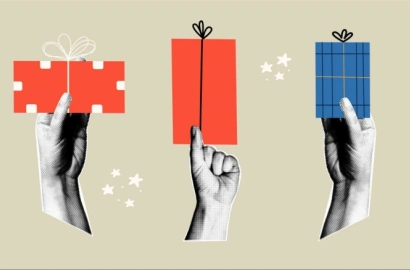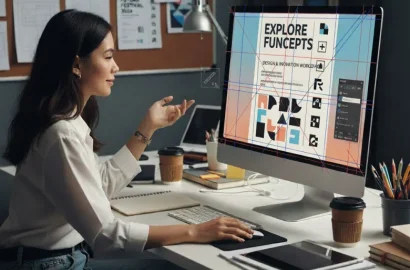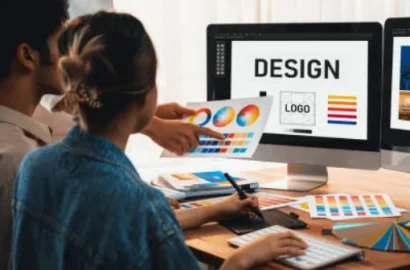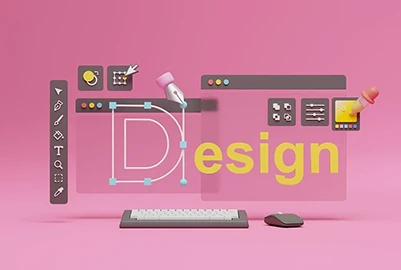Read to know how AI is reshaping creativity and ways in which designers can harness it without losing originality.
Artificial Intelligence (AI) is not new anymore. It has now embedded itself in almost every visual communication process, and designers are showing an increased acceptance of it. According to a survey done by Canva, 69% of global marketing and creative leaders believe it’s enhancing their team’s creativity. However, 17% still feel that generative AI tools are limiting their team’s creativity, citing that they prevent the development of original ideas.
Why is it that most designers are comfortable with the rising use of Gen AI, but some disregard its potential? What kind of work is AI being used for? How can designers benefit from using AI? These are important questions that one might venture to ask, and so, we have tried to answer them in this article. Read along to find out.
Here are the topics that we have covered:
- AI in Modern Graphic Design
- AI and the Creative Process
- The Limitations of AI in Graphic Design
- Popular AI Design Tools
- The Evolving Role of Graphic Designers
- Final Thoughts
- FAQs

AI in Modern Graphic Design
In today’s world, where design is digital first and print later, graphic design has evolved beyond static print media. The tools designers use daily, for branding, UI/UX, illustration, or marketing, are increasingly powered by artificial intelligence. Canva, Figma, Adobe Creative Suite, Sketch, Flowmapp, UXPin, and Miro- nearly every major design platform now integrates AI features as part of their creative toolkit.
At its most immediate level, AI assists in design tasks by automating repetitive or time-consuming tasks. Background removal, object detection, color palette generation, font suggestions, auto-layout adjustments, and content resizing have become standard operations instead of extras. AI models trained on large visual datasets can now even make probabilistic guesses about design intent based on input and give suggestions that align with the user’s goals.
The influence of AI extends beyond being efficient and moves towards ideation. By using models such as OpenAI’s DALL·E or Midjourney, designers explore hypothetical juxtapositions, visual metaphors, or unconventional styles. What this does is change the nature of what it means to brainstorm. Instead of laboriously mocking up design variations by hand, designers can rely on an AI system that returns dozens or even hundreds of visual options, among which human judgment can choose. This allows the designer to act more like a creative director.
As a result, design goes from the mastery of tools to the curation of machine-generated stimuli, a shift that raises both exciting potentials and serious questions about authorship, originality, and the future role of the human in the design loop. All in all, AI is definitely changing how the creative process works.
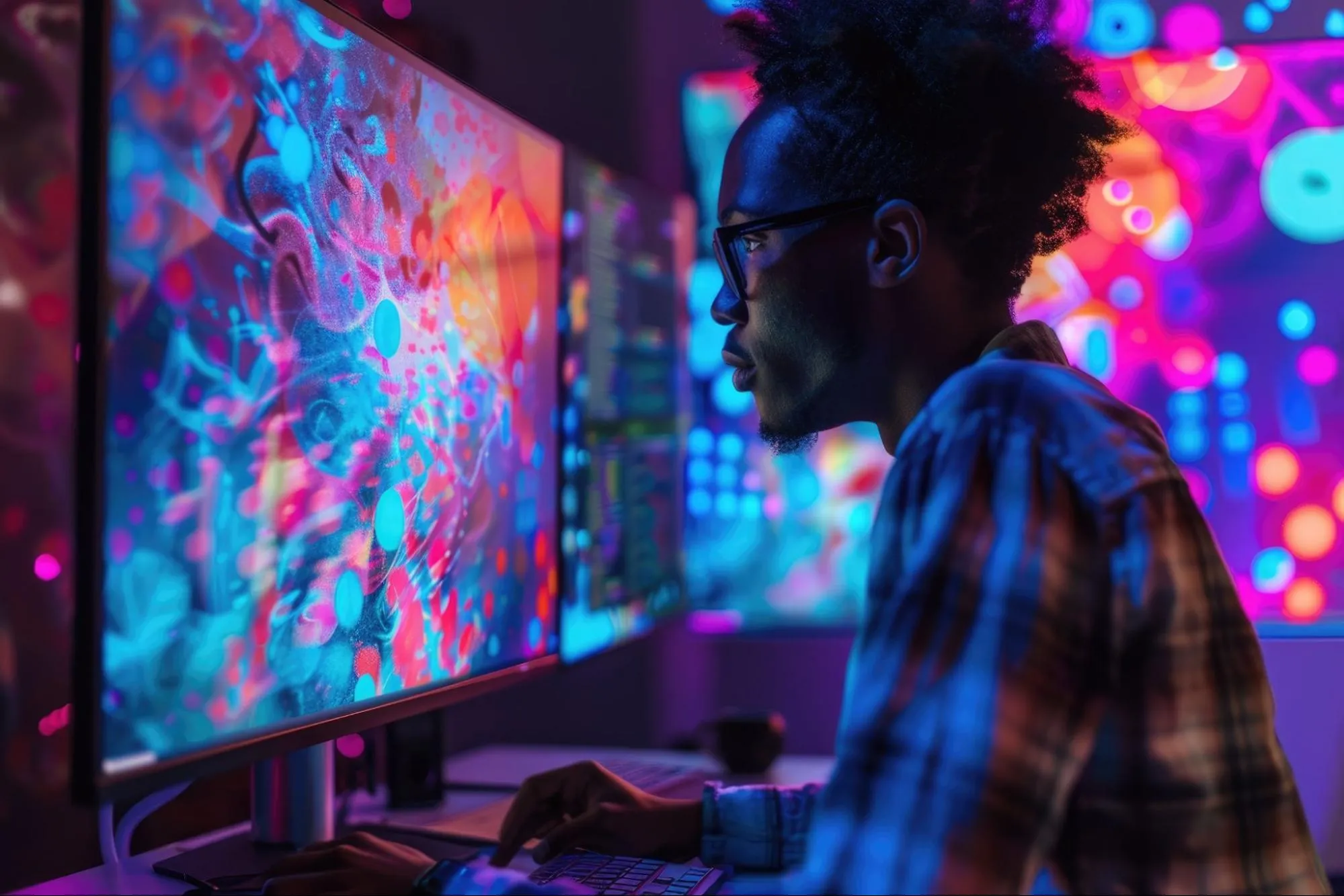
AI and the Creative Process
The idea of a singular, standard creative process would not be very accurate, since creativity, by its very nature, resists formalization. Trying to define a universal creative method would be reductive. Instead, it is more productive to understand the context under which a designer forms their creative process, and then explore how artificial intelligence interacts within that specific context.
In current practice, one can observe a sort of divergence in the design community. This division occurred with the availability of design tools with respect to changing times. On one end of the spectrum are designers (let’s call them Cohort-1) who entered the field when software like CorelDRAW and Microsoft PowerPoint represented the mainstream digital design tools. Those designers today are at a senior or executive level. On the other end are those whose introduction to design coincided with the rise of platforms such as Canva and Figma (let’s call them Cohort-2), which assume a different philosophy of using a tool and interaction.
Designers who began their careers with earlier graphic design software were required to manually construct visual compositions. Creating basic shapes, paths, elements, and adjusting alignment were actions that demanded methodical input. These tools were traditional design methods programmed in a digital format. They prioritized precision and had no automation. As such, the creative process involved much technical execution. Every design began with a blank canvas and a set of digital drawing tools.
For this group, the change that artificial intelligence brought was automating the repetitive, time-consuming aspects of design work, such as resizing images, removing backgrounds, typographic hierarchies, filters, etc. By doing so, AI created room for creative tasks.
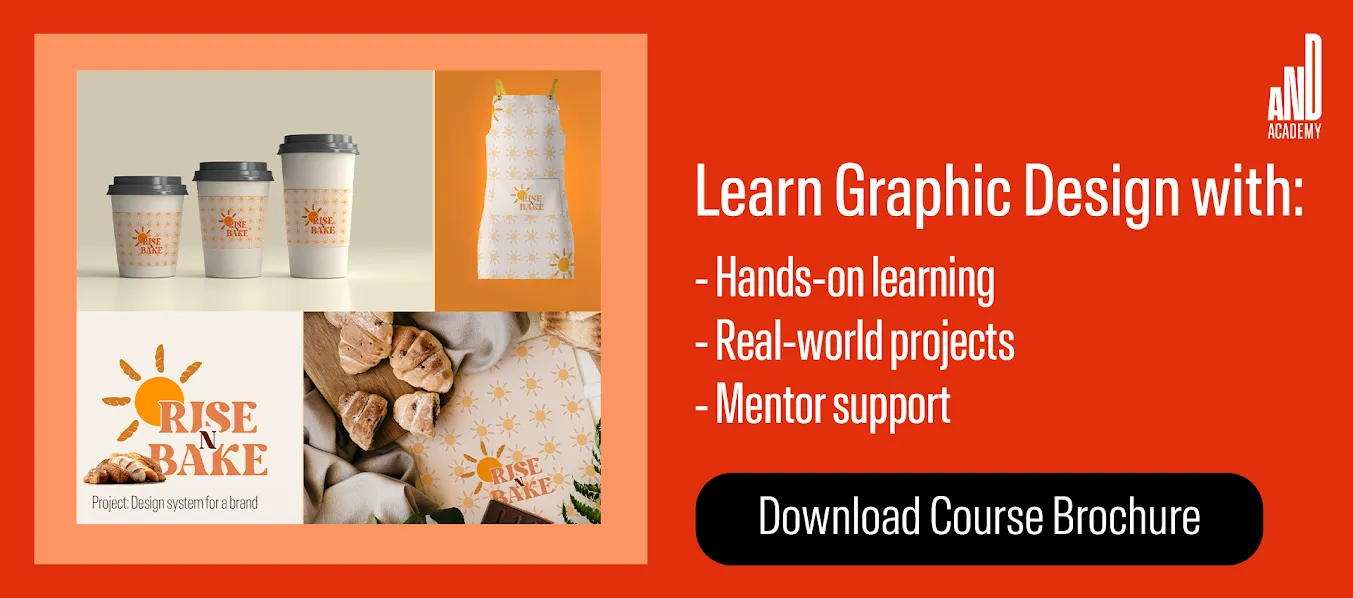
In contrast, Cohort- 2 is habituated to a fundamentally different design culture. The way tools such as Canva and Figma are used does not emulate manual drawing or start from scratch design to the extent comparable to the tools used by Cohort-1. Instead, they provide accessible and visual environments with pre-designed templates, modular components, and drag-and-drop elements, where the emphasis shifts to curation, composition, and iteration.
For Cohort 2, the creative process is less about building visual elements from raw materials and more about configuring existing visual elements. Design work begins with a gallery of templates that serve as starting points, and in such a framework, AI becomes an essential graphic design tool that saves time and effort. Here, AI is used to ideate, to experiment with style variations, or generate visual concepts in response to text prompts.
For Cohort‑1, AI is a quiet assistant automating repetitive tasks. For Cohort‑2, AI feels more like a co-creator. But no matter the entry point, both cohorts face the same challenge of balancing AI’s speed with human intent.
And, even with such power, AI is not a complete replacement for human thinking.

The Limitations of AI in Graphic Design
While it can mimic styles and streamline workflows, AI doesn’t truly understand the emotional, cultural, or strategic layers behind a design decision. The human element of awareness, doubt, and critical thinking is still essential to design, and this is where limitations of AI become extremely clear. Read on to understand these in detail.
1. Lack of Self-Doubt
At first glance, artificial intelligence appears confident. It processes data, identifies patterns, and produces polished results. But beneath this efficiency lies a flaw: AI does not doubt. It cannot second-guess its outputs. Unlike human designers, who are attuned to the subtleties of discomfort, contradiction, or moral tension in communication, AI simply combines data without questioning the patterns it detects. For Cohort‑2 especially, accustomed to starting with templates or AI-generated ideas, there’s a risk of over-trusting what appears ‘finished’. The illusion of certainty grows stronger when one doesn’t wrestle with the idea from scratch.
2. Misdirected Notions of the World
Experienced designers understand meaning. They notice when a message feels off, when a color miscommunicates emotion, or when the layout contradicts cultural nuance. This sensitivity is what brings integrity to design. Doubt is the tool they use to pause, reflect, and correct. They ask: Is this really the right solution, or the most convenient one? AI, in contrast, does not sense when two ideas are contextually incompatible.
3. Limited Contextual Understanding
AI does not actually ‘understand’ anything; instead, it looks for statistical relatability between symbols. In doing so, it builds arguments and generates options based on assumptions that might not be grounded in the problem’s context. This makes AI a master of giving good answers. However, without awareness of the assumptions it’s making, it can confidently offer solutions that are fundamentally disconnected from reality. It relates things that shouldn’t ideally be related.
4. Wrong Starting Point
When designers begin with AI suggestions, say, for color palettes, layout styles, or even conceptual framing, they risk starting from assumptions that are statistically common but contextually false. This leads to an architectural flaw: ideas that look structurally sound but are, in essence, built on sand. So, the higher one builds on that base, the further one drifts from solving the real design problem. While Cohort‑1 might use AI as a polish or validation, Cohort‑2 uses it as a springboard. That sort of change narrows exploration before it even begins, and one runs the risk of coming up with designs that don’t do justice to the audience’s context.
None of this warrants a rejection of AI. It means designers must understand the way their inputs are processed and also know when to question the output. Thankfully, AI tools, if used judiciously, can assist creativity without dictating it.
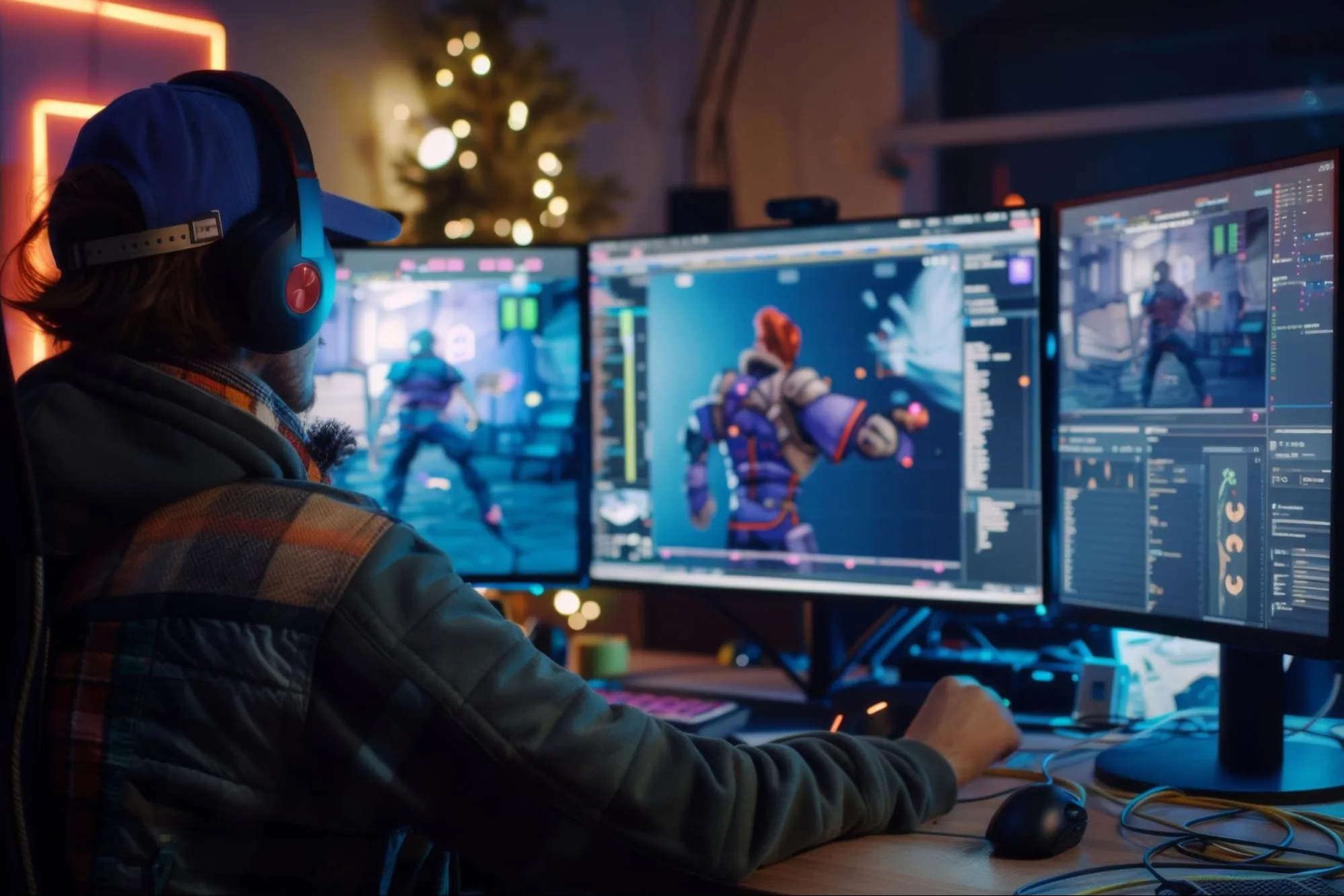
Popular AI Design Tools
There are various tools and features that designers can use to automate certain tasks and employ AI to their advantage. Read on for a few types below.
1. Layout & Design Assistants
Figma recently introduced a suite of AI tools that speed up the design process. Its Visual Search feature helps designers find similar visuals using images or text, and Semantic Asset Search interprets vague terms like ‘primary button’ to search for the right components. With its ‘Make Designs’ feature, users can generate UI drafts from plain text prompts. The platform also has prompt-based text rewriting, translation, and content generation.
Tools such as Fontjoy and Typescale use AI to recommend font pairings based on aesthetic and functional compatibility. Instead of testing dozens of combinations manually, a designer can receive suggestions based on hierarchy, readability, and genre.
2. Automated Branding Tools
Branding is another domain increasingly influenced by AI. Platforms like Looka or Brandmark use AI to generate brand kits, complete with logos, color schemes, and typographic combinations based on a user’s input about their business identity. While the outcomes might lack the nuance of custom design work, these tools make visual identity systems accessible for startups and small businesses, which then can later be refined by professional designers.
3. UX Analytics
UI/UX design platforms have integrated AI for wireframing, prototyping, and user behavior prediction. AI can analyze user flows to predict friction points or recommend changes for better usability. For instance, AI in Hotjar or FullStory can interpret heatmaps and click-tracking data to identify design elements that users find confusing or inaccessible, which can inform future design decisions.
The takeaway here is that AI tools excel at handling the mechanical, data-driven, and iterative aspects of the design process, in turn enabling designers to focus more on conceptual thinking, experimentation, and crafting.

The Evolving Role of Graphic Designers
As AI for graphic design grows more capable, the responsibilities and required skill sets of graphic designers are also changing fundamentally. The traditional role of a designer is being reshaped into that of a creative director, design strategist, and system thinker. Some aspects that are evolving are:
1. Increased Focus on Ideas
Designers today are not expected to draw every icon or develop every gradient from scratch. Instead, their value lies in how they conceptualize problems, frame narratives, and make design choices that align with brand strategy, consumer psychology, and cultural trends.
2. Speaking the Language of AI
A broader understanding of disciplines beyond visual aesthetics is desired. Designers must learn the language of data and algorithms, as AI systems rely on input quality and semantic clarity. Knowing how to describe a visual idea to a machine in terms of style, mood, composition, and color can determine whether the output is useful or not.
3. Mindfulness around Ethics
Modern-day designers are also being asked to make judgments about fairness, representation, and authenticity, which are tasks that AI cannot handle reliably. For instance, an AI might inadvertently generate biased imagery that reinforces stereotypes if its training data is unbalanced. The designer must recognize and correct this. When using AI, it’s the designer’s role to audit, verify, and ensure the integrity of outputs.
4. Empathy in Design
Soft skills such as empathy, storytelling, and conceptual thinking are growing in importance. For example, while an AI can generate a logo based on a set of prompts, it cannot understand the emotions and psychological associations that the logo needs to evoke for a specific audience. A human designer, through research and lived experience, can establish meaning in ways AI cannot.
As AI continues to evolve, the designers who embrace its possibilities while mastering its limitations will shape the future of the creative industry.
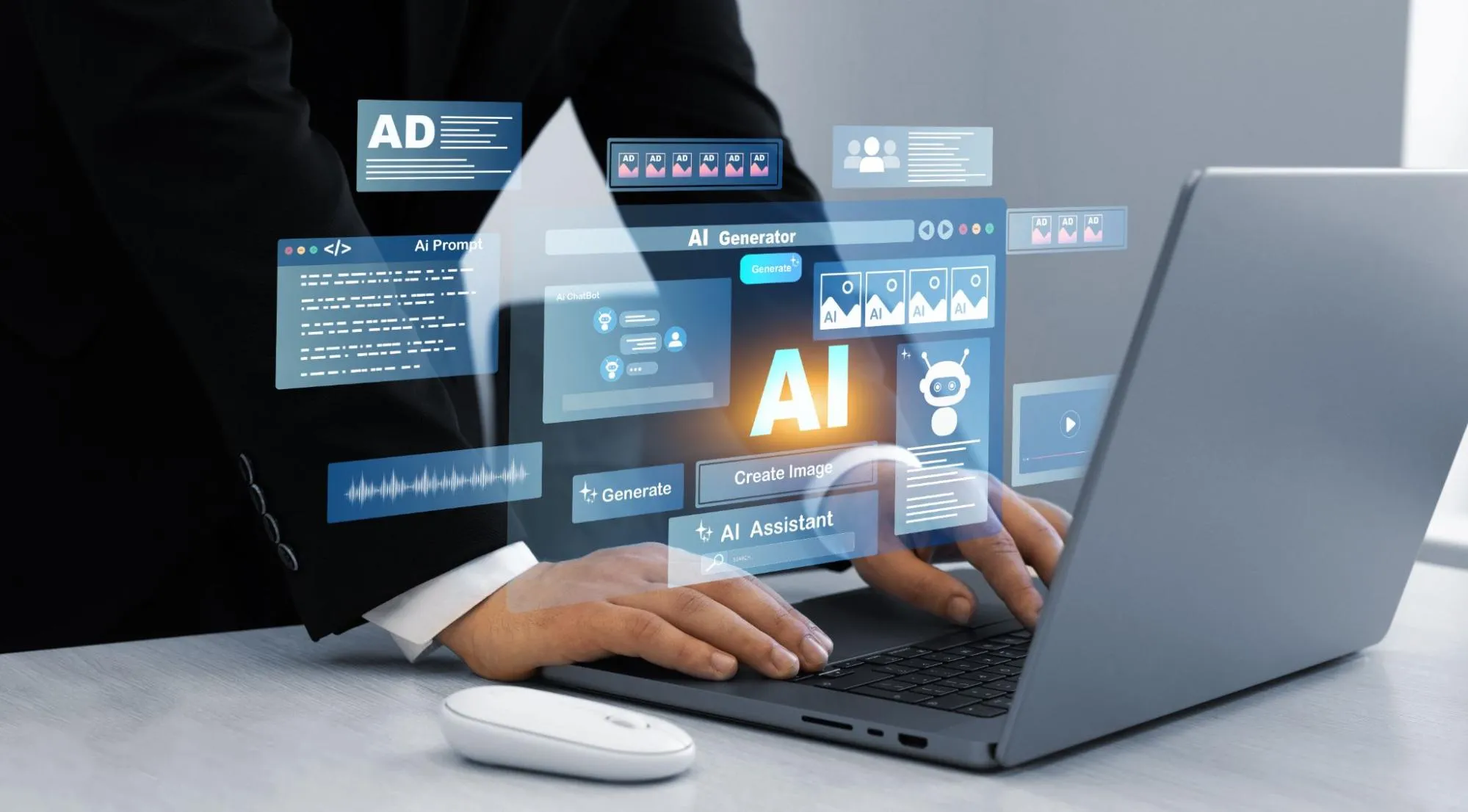
Final Thoughts
AI is changing graphic design, but its real power lies in enhancing and not replacing human creativity. The best designers will use AI as a smart assistant, combining its speed with their unique intuition, cultural insights, and strategic thinking. The key here will be knowledge and being able to think like a designer. We recommend you check out this project by AND Learner, Bibin S, for inspiration for your next project.
While AI can generate options, only designers can choose the right one. It can suggest colors, but only designers can know if they evoke the right emotions. The future belongs to those who balance AI’s capabilities with human creativity and use it to handle repetitive tasks while focusing on storytelling and innovation.
FAQs
Q1. Will AI replace graphic designers?
- AI is unlikely to replace graphic designers entirely. AI excels at automation and generating design options, but it lacks human intuition, emotional intelligence, and strategic decision-making. Designers who adapt by using AI as a tool rather than relying on it as a replacement will remain essential for refining ideas.
Q2. How can designers maintain originality when using AI?
- Originality requires conscious effort when working with AI. Rather than accepting AI’s first suggestions as final solutions, designers should use them as ideas to be challenged and refined. Ask why certain suggestions emerged, whether they truly fit the project context, and how they might be subverted or reframed in different ways.
Q3. Which AI tools are best for graphic designers?
- Many AI tools solve different aspects of design problems. For concept generation, Midjourney and DALL·E are popular. Figma AI and Canva’s Magic Design assist with layout and UI, and Fontjoy helps with typography. Branding and AI logo design tools like Looka automate logo creation, and UX analytics platforms such as Hotjar provide user behavior insights.
Next Steps
In case you need further assistance, here are some of our resources you can consider:
- Watch this session by design veteran and AND’s Academic Head, Prachi Mittal, and our Course Lead, Soumya Tiwari.
- Talk to a course advisor to discuss how you can transform your career with one of our courses.
- Pursue our Graphic Design courses – all courses are taught through live, interactive classes by industry experts, and some even offer a Job Guarantee.
- Take advantage of the scholarship and funding options that come with our courses to overcome any financial hurdle on the path to your career transformation.
Note: All information and/or data from external sources is believed to be accurate as of the date of publication.


